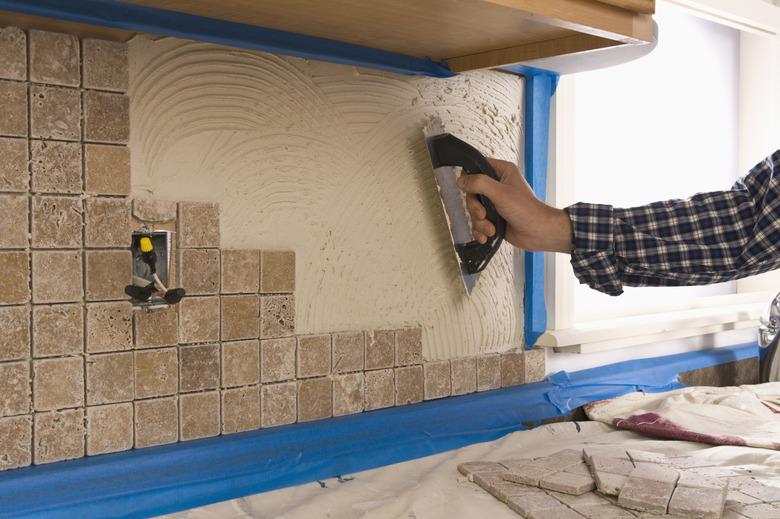How A Tile Backsplash Meets With A Granite Counter Top
Tile backsplashes are frequently added to kitchens as a finishing design element. They can be made of any kind of tile and vary in size. Typically the tile backsplash stretches from the countertop to directly beneath the cabinets, although some may be only 4 inches in height and some may sit on top of a 4-inch granite backsplash.
When installing a tile backsplash above a granite counter, it's important to make sure the two areas meet properly. This will prevent potential problems, such as cracking grout or shifting tiles down the line.
Caulk the Granite to the Wall
If the granite has been installed with no 4-inch backsplash, the granite has probably been pushed up against the wall itself. Depending on how level the wall is, there may be a slight gap between the wall and the granite. The backsplash tile must have a perfectly level and flat area to land against to avoid slipping. To prepare the granite for the backsplash, begin by caulking this gap between the granite and the wall. This will provide a solid surface where the backsplash mortar cannot go, while providing the granite a stable seat against the wall.
Leave a Gap
The tiles being installed on the backsplash should not actually touch the granite. Instead, install them approximately 1/8 inch above the granite. This small gap is known as an expansion joint. The expansion joint is crucial because houses may settle or move slightly over time. Any flex to the kitchen cabinets or countertop could put stress against the backsplash tiles, popping them loose from the wall if the tiles and the granite were to meet one another. A gap between the granite and tiles allows room for flex and movement without damage to the tile.
Caulking the Gap
When grouting the backsplash tiles, leave the gap between the granite and the tiles empty. If grout does get into this space, clean it out as soon as possible to keep it from drying in place. Grout is inflexible and will crack if pressure from the counter is placed against it. Instead of grout, fill the expansion joint between the tiles and the countertop with a latex caulk that matches the color of the grout. Latex caulks come in sanded and unsanded varieties. If you are installing a handmade ceramic tile or tumbled stone tile that has a wide grout joint due to edging irregularities, open up the expansion joint a little wider and use a sanded caulk that matches the sanded grout.
Installation Tips
After caulking the granite against the wall, seal the granite along the edge where the counter meets the wall. This will facilitate cleanup if caulk or grout falls on the granite during installation. If the tile backsplash is coming down to meet a 4-inch granite backsplash, treat the granite backsplash exactly like the granite counter: Caulk it to the wall, seal it and leave a small gap between the two areas. This gap, however, can be filled with grout, since both are on the same plane.
